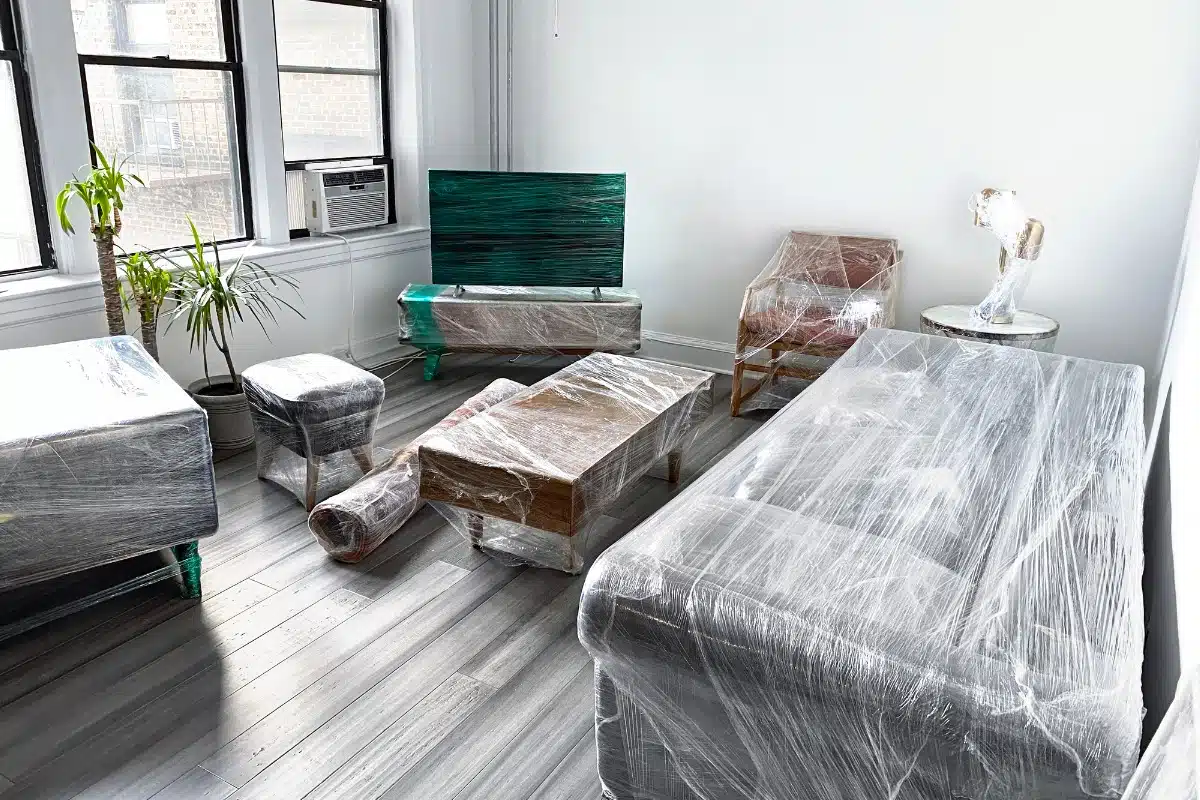There’s nothing like the peace of a well-organized move.
Relocating to a new area is obviously one of those things that should be fun.
But protecting your furniture as you move is not only about putting everything in a truck but also ensuring that how they started the journey from one place should reach there safely.
Every year in the U.S. there are millions of people who relocate, on average 40 million!
The American Moving and Storage Association estimates about 35 million Americans move each year, with nearly 60% of those moves being household relocations.
But amidst all this, there is a stark truth that lies behind it: nearly 20% of those moves hide damage to furniture or household goods.
So, protecting your possessions with mitigation techniques is more than just an amenity — it’s a must.
We purchase great furniture all the time, not realizing that by the time we move, some of it is gone chipped, scratched or worse.
Your furniture is an investment of significant value. On average, households spend more than $8,000 annually on home furnishings.
That is why each piece must be packed, wrapped and carried carefully.
So, let’s get into the best ways to protect furniture when moving.
Plan and Prepare Ahead
Preparation is key when it comes to moving, especially with bulky and valuable furniture.
Start by organizing your move well in advance.
Create a Moving Plan: Set a realistic timeline for packing and moving, preferably 2-3 weeks before the move.
Break tasks down into manageable chunks (like disassembling furniture one day and wrapping it the next) to reduce stress.
Inventory Your Items: Take stock of your furniture.
This will help you determine which pieces need extra protection, and it’s also useful if you choose to hire movers.
Disassemble Larger Pieces
Disassembling large furniture, such as beds, dressers, and tables, is the safest option to prevent damage while moving.
Here’s how you can do that:
Follow Manufacturer Instructions: Always follow the manufacturer’s guidelines to ensure you take pieces apart correctly.Follow Manufacturer Instructions:
Keep screws, bolts, and other hardware in labeled bags.
Store Parts Safely: Attach these small parts directly to the corresponding furniture item or keep them in a labeled container to avoid losing them.
Use the Right Packing Materials
It is crucial to choose the right packing materials for safeguarding furniture in transit.
Here's what you need:
Moving Blankets: One of the best ways to protect your items from scratches and dents is to invest in a high-quality moving blanket for furniture protection.
They are thick and help absorb shocks during transit.
Bubble Wrap and Plastic Covers: Wrap the fragile items in bubble wrap before using plastic covers.
This prevents dust, moisture, and impact damage.
Corner Protectors: If your furniture includes sharp or delicate edges, use foam corner protectors.
These are effective for glass tops, mirrors, or wooden edges.
Techniques for Wrapping Furniture
Proper wrapping of furniture is an essential part of furniture padding techniques for a move:
Use plastic wrap or specially designed furniture covers for sofas and chairs.
This keeps dirt and moisture out while protecting the fabric.
To protect wooden furniture when relocating, wrap each piece in moving blankets and secure them with stretch wrap.
Avoid placing tape directly on wood, as it can damage the finish.
Packing Fragile Furniture
Fragile pieces require extra attention.
Glass and Mirrors: Use packing kits designed for glass that include cushioned corner guards.
Wrap these items in blankets or foam padding to prevent shattering.
Antique and Specialty Items: For antiques, use padding and wrap each item separately.
Use custom crates if these pieces are especially valuable.
Load and Secure the Moving Truck
Properly loading the moving truck allows your furniture to stay secure during the move.
Heavy Items First: Load heavier items like dressers and sofas first and place them against the truck walls.
Use Straps and Padding: Secure furniture pieces with straps to prevent shifting during the move.
Place blankets or pillows between pieces to avoid scratches.
Best Packing Materials for Furniture: In addition to blankets, use thick cardboard or foam padding to fill gaps between items.
Special Care for Fragile and Valuable Items
If you have fragile or valuable furniture, it is crucial to handle these items with care.
Specialty Moving Supplies: Dollies, moving straps, and sliders are essential for them.
They help lift and move bulky items without causing strain or damage.
How to Protect Fragile Furniture During a Move: Hire professionals to handle delicate furniture like glass tables or wooden designs.
They have the expertise and equipment needed for safe transport.
Unload and Reassemble Furniture Safely
Once you arrive at your new home, unload the furniture properly.
Start with the heaviest and bulkiest items.
Use the same lifting techniques you used when loading to avoid injury.
Follow the labeled parts and hardware to reassemble your furniture quickly.
This reduces the chance of parts getting lost.






